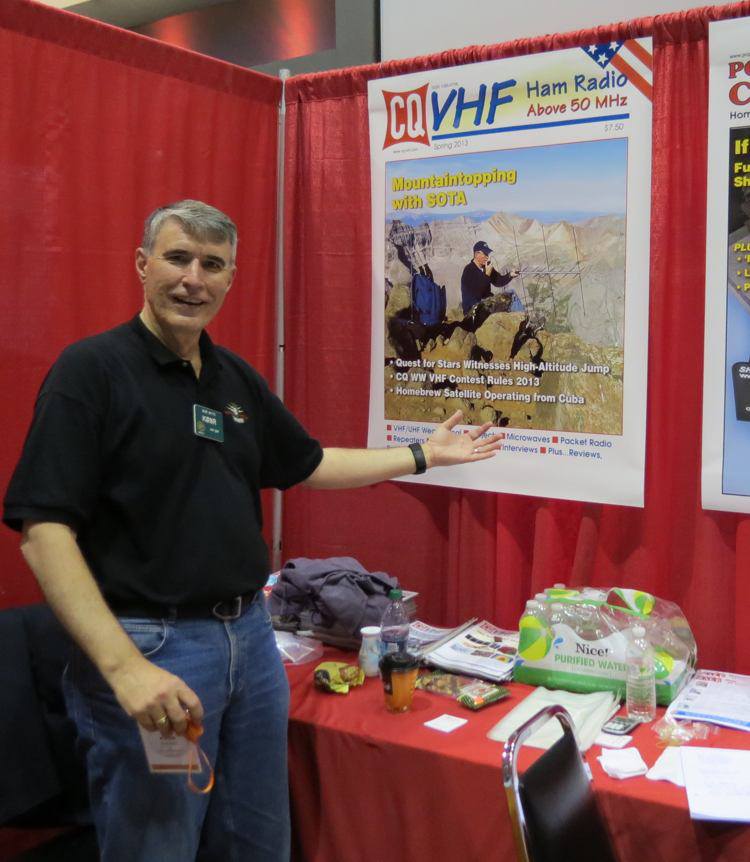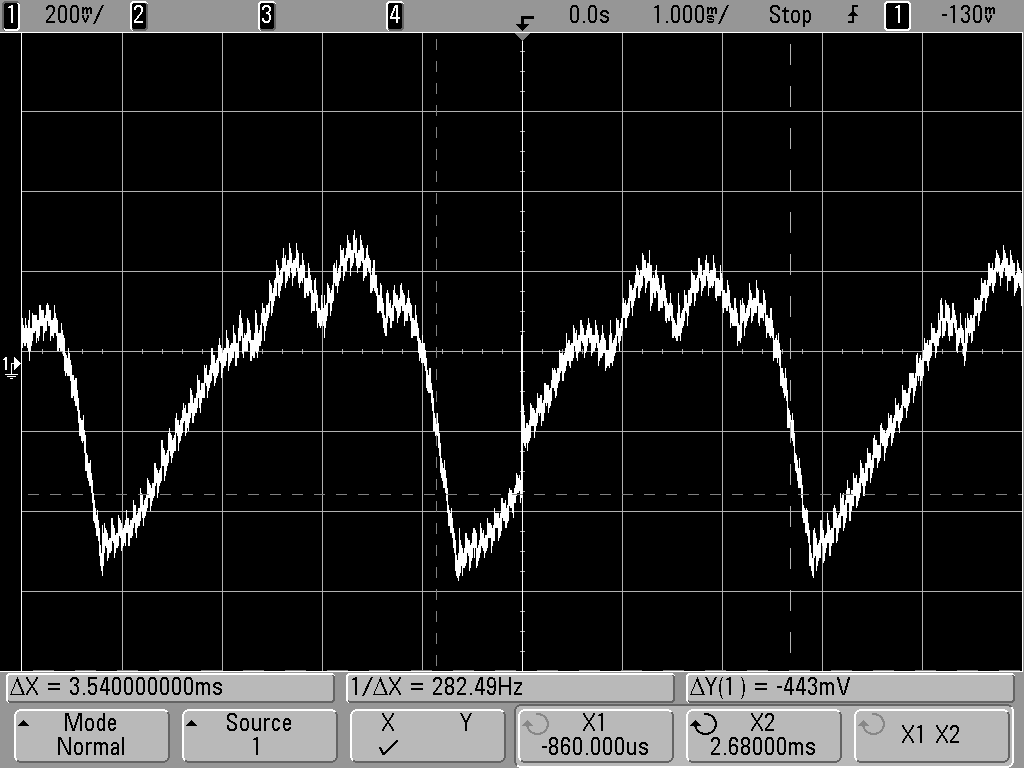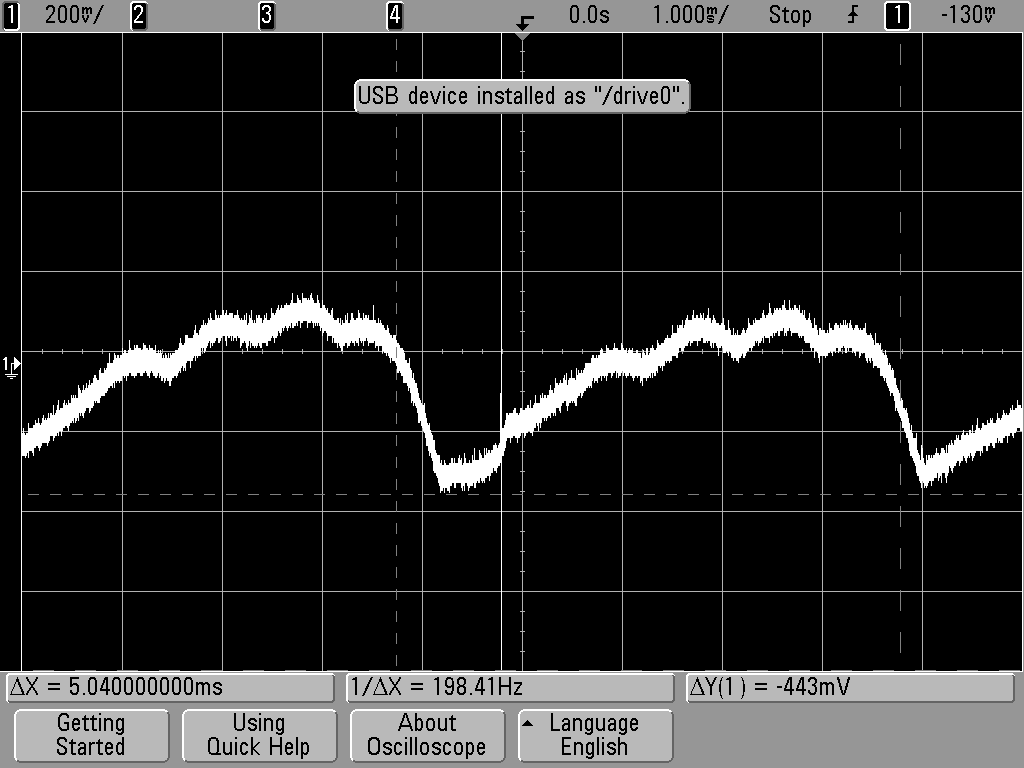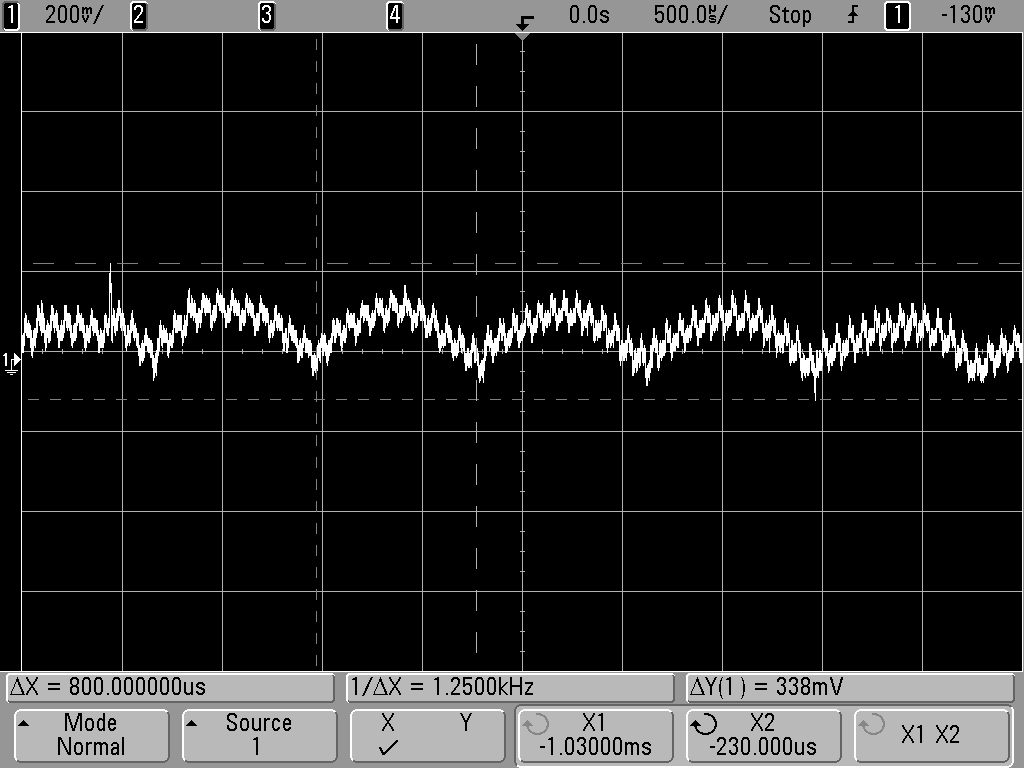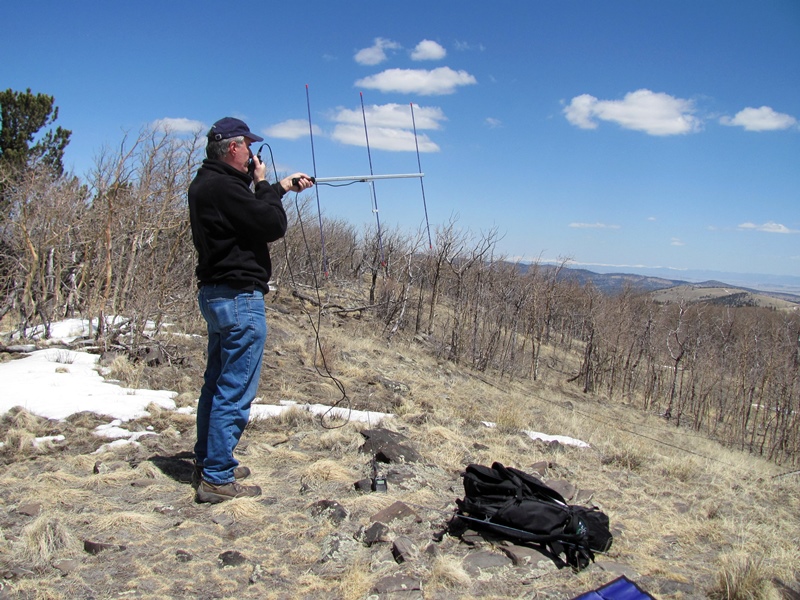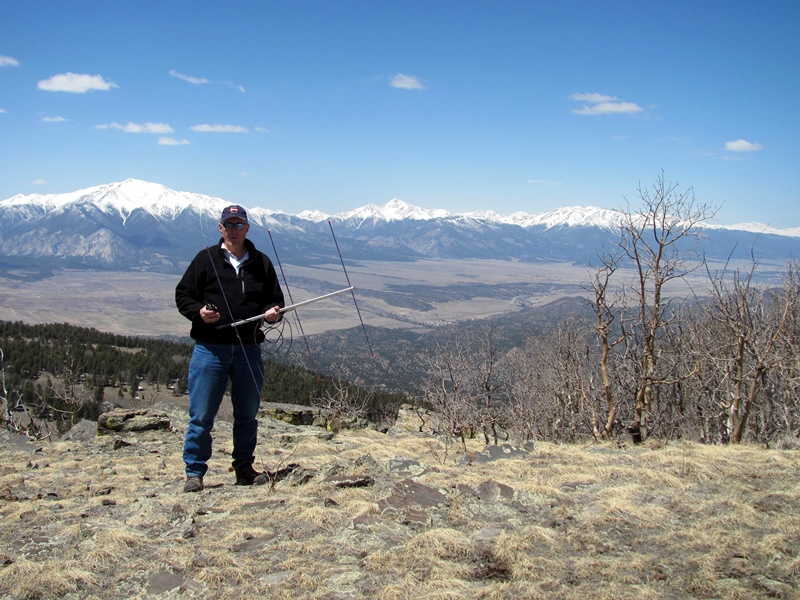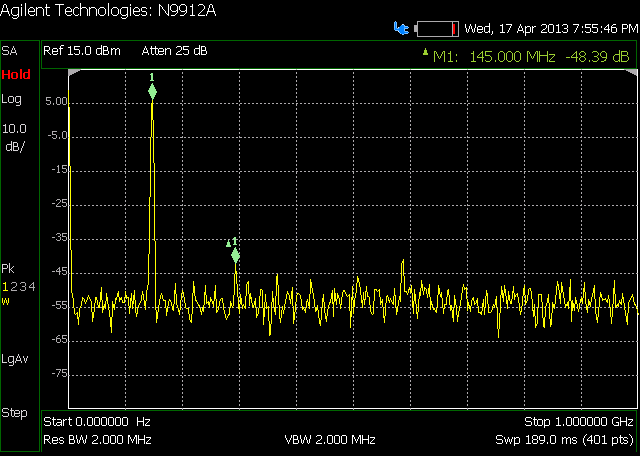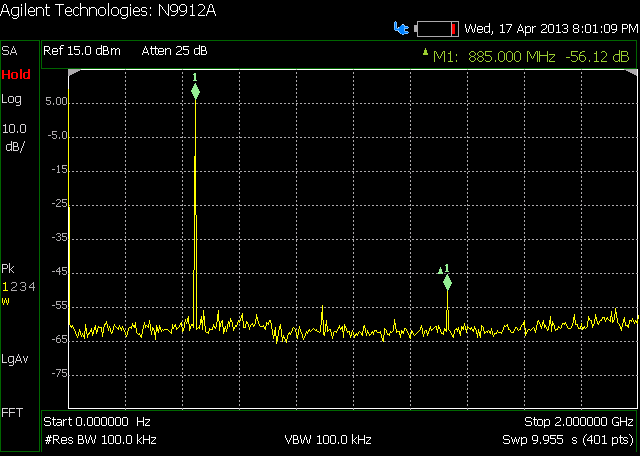Author Archive
 Dayton’s Over – Time to Analyze
Dayton’s Over – Time to Analyze
I made it to the Dayton Hamvention this year, after a multi-year absence. Due to that four-letter word known as work, I was not able to arrive until really late Friday night. That left all day Saturday and the half day on Sunday to partake of the event.
I’ll start with the obligatory dig at Hara Arena, repeating my tweet:
Hara Arena continues to be everything that I wish it wasn’t.
Check out the posts by Jeff KE9V and Steve K9ZW about their impressions of Hamvention.
I spent some time helping out at the HamRadioSchool.com booth in the north hall. Wow, what a positive response we got from that effort. Stu W0STU’s Technician and General Class books have really hit their mark, finding a good balance between covering the material to pass the FCC exams while also helping students to really get it. We heard quite a few instructors stop by and say “This is what I have been looking for!” If you are teaching a ham radio licensing class, you need to check out the HamRadioSchool.com books….and the companion web site and iOS apps.
One of the high points of the weekend was discovering the poster-size front cover of Spring 2013 CQ VHF with my mountaintop photo on it. Joyce K0JJW took a great shot of me operating from Mt Sneffels last August (Colorado 14er Event and SOTA), so it was an excellent complement to my article: “A Little Mountaintop Operation”.
So I leave Dayton, thinking about the highs and lows for the weekend. There was not much new that really caught my attention. (Disclaimer: I am sure I didn’t see everything there.) I am still looking for an FT-950 with 2 Meters, an Android HT and a D-STAR radio from Kenwood, Yaesu or even Alinco. Also, there is a real trend of vaporware instead of products. I’ve gotten really jaded about this. If a company can’t quote price and delivery, then it doesn’t exist in my world.
As K9ZW pointed out, much of the fun of Dayton is being with great people: some old friends (like my bud Denny KB9DPF) and some new ones, too.
How was your Hamvention?
73, Bob K0NR
 The Mysterious Case of Alternator Noise
The Mysterious Case of Alternator Noise
When I purchased my 2003 Ford Escape, I decided to install multiple ham radios and a bunch of antennas. Mostly I use a Yaesu FT-8900 FM transceiver for operating on the 2-Meter and 70-cm ham bands. A while back, I started getting reports that I had alternator whine on my transmit audio. I was perplexed because I thought I had done a pretty darn good job of installing the radio, including connecting heavy 12V power cables directly to the battery. (See K0BG’s web page for more information on battery connections.) I really wasn’t sure if this was a day one problem (and no one ever told me about the crummy audio) or something that had just started. My first course of action was to ignore it and see if it goes away. This strategy failed miserably as my FCC-licensed spouse continued to report that I was “whining”. Finally, I decided to put my alleged knowledge of electricity to work. I got out my trusty oscilloscope and took a look at the voltage near the transceiver. There was about 800 mV of ripple on the DC voltage, as shown below.
The frequency of the ripple was in the audio range, consistent with alternator whine. The frequency of the ripple increased when I rev’d the car engine, so it was clearly coming from the alternator. I was surprised to find that the size of the ripple did not depend much on whether I was transmitting or not. The transmit current is much higher than the receive current, so I expected the ripple to be worse on transmit.
Then I decided to measure the ripple voltage right at the battery, which is shown below. The peak-to-peak ripple is smaller (about 400 mV) than at the radio but still present. I expected the the voltage to be mostly clean right at the battery.
I pondered what to do next. One approach would be to install a filter to eliminate the ripple. However, filtering out a few hundred Hz signal while maintaining a low voltage drop on the 12V power feed is not trivial. More importantly, I had the sense that the Escape’s electrical system was just not operating properly. I decided to take it to my local mechanic, who tested the alternator and determined that a diode had failed. He replaced the alternator for me and the whine is now gone.
I did measure the 12 volt supply with the new alternator installed and the radio transmitting. I was surprised to find that there is still some ripple, a bit less than 200 mV (shown below). Apparently, this is not enough to disturb the FT-8900 signal.
So that’s the story about my alternator whine.
My spouse says “I still whine sometimes” but it has nothing to do with my ham transceiver.
– 73, Bob K0NR
 General License Book From HamRadioSchool.com
General License Book From HamRadioSchool.com
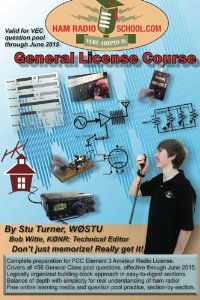 HamRadioSchool.com is off to a great start with a learning system that includes a web site, iPhone app and a great Technician License Course book. The Technician book, written by my fellow instructor Stu Turner W0STU, has turned out to be very popular. Stu did a great job of balancing “teaching the right material” with “focusing on the exam questions.” We’ve used the book in our two-day Tech license class with great success.
HamRadioSchool.com is off to a great start with a learning system that includes a web site, iPhone app and a great Technician License Course book. The Technician book, written by my fellow instructor Stu Turner W0STU, has turned out to be very popular. Stu did a great job of balancing “teaching the right material” with “focusing on the exam questions.” We’ve used the book in our two-day Tech license class with great success.
Many people have been asking Stu when he’s going to write a book for the FCC General Class License. So, by popular demand, here it is: HamRadioSchool.com General License Course. Using the same creative style that worked well with the Technician book, Stu has delivered an easy-t0-grok book for getting your General Class License.
I was happy to provide technical assistance to Stu for this book and earned the esteemed title of Technical Editor. It even says so on the front cover! (It says Technical Editor because I can’t be held responsible for proper grammar or spelling.)
Just like the Tech book, the General book has a companion iPhone app available on iTunes.
73, Bob K0NR
 The Updated Incomplete List of Ham Radio iPhone Apps
The Updated Incomplete List of Ham Radio iPhone Apps
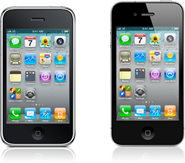 It is about time I updated one of my more popular posts, The Incomplete List of Ham Radio iPhone Apps from 2011. This was a challenging task back then and has gotten more difficult as the number of ham radio apps for the iPhone has greatly expanded. Still, I will give it a shot and appreciate your feedback to make the list better. I am only evaluating iPhone apps, not iPad apps, since I don’t use an iPad.
It is about time I updated one of my more popular posts, The Incomplete List of Ham Radio iPhone Apps from 2011. This was a challenging task back then and has gotten more difficult as the number of ham radio apps for the iPhone has greatly expanded. Still, I will give it a shot and appreciate your feedback to make the list better. I am only evaluating iPhone apps, not iPad apps, since I don’t use an iPad.
In general, I will focus on free or low cost (less than $5) apps that I am actively using.
From the Simple Utility Category:
Maidenhead Converter (Author: Donald Hays, Cost: Free) Handy app that displays your grid locator, uses maps and does lat/lon to grid locator conversions.
Ham Radio Handbook (Author: Antonis Miliarakis Cost: Free) This app provides some basic ham radio info: Q Signals, Country Prefixes, Band Plans and RST signal reporting.
UTC Time (Author: Michael Wells, Cost: Free) A simple app that displays UTC time and local time.
Ham I Am (Author: Storke Brothers, Cost: Free) A handy app that covers some basic amateur radio reference material (Phonetic alphabet, Q Signals, Ham Jargon, Morse Code, RST System, etc.) Although I find the name to be silly, I like the app!
There are quite a few good apps for looking up amateur radio callsigns.
CallBook (Author: Dog Park Software, Cost: $1.99) Simple ham radio callbook lookup with map display.
Call Sign Lookup (Author: Technivations, Cost: $0.99) Another simple ham radio callsign lookup with map display.
CallSigns (Author: David Fleming W4SMT, Cost: $1.99) This is my favorite ham radio callsign lookup. The features are not much different than the others I have listed but the graphics are nicer and the user interface a little cleaner. I am sure this is mostly personal preference.
There are a few repeater directory apps out there:
iHAM Repeater Database (Author: Garry Gerossie, Cost: $4.99) Geolocation repeater directory. This seems to work well.
RepeaterBook (Author: ZBM2 Software, Cost: Free) I’ve only used this one a bit but it seems to work well and its free.
If you are an EchoLink user, then you’ll want this app:
EchoLink (Author: Synergenics, Cost: Free) The EchoLink app for the iPhone.
There are quite a few APRS apps out there. I tend to use these as my needs are pretty simple….just track me, baby!
iBCNU (Author: Luceon, Cost: $1.99) The first APRS app I was able to get running. It just turned on and worked. It integrates the aprs.fi mapping into the app, so it is easy to use. I recommend this one for most casual APRS users.
Ham Tracker (Author: Kram, Cost: $2.99) APRS app, works OK, uses external maps such as Google and aprs.fi. “Share” feature allows you to send an SMS or email with your location information.
Satellite tracking is another useful app for a smartphone:
ISS Lite (Author: Craig Vosburgh, Cost: Free) A free satellite tracking app for just the International Space Station. It has annoying ads but its free.
ProSat Satellite Tracker (Author: Craig Vosburgh, Cost: $9.99) This app is by the same author as ISS Lite, but is the full-featured “pro” version. Although it is a pricey compared to other apps, I recommend it.
For Summits On The Air (SOTA) activity, there are a few apps:
Pocket SOTA (Author: Pignology, Cost: Free) A free app for finding SOTA summits, checking spots and accessing other information.
SOTA Goat (Author: Rockwell Schrock, Cost: $4.99) This is a great app for SOTA activity. It works better when offline than Pocket SOTA (which often happens when you are activating a summit).
For Technician License training, I like the HamRadioSchool.com app. (OK, I am biased here as I contribute to that web site.)
HamRadioSchool (Author: Peak Programming, Cost: $2.99) There are a lot of Technician practice exams out there but this is the best one, especially if you use the HamRadioSchool license book. They also just released the General practice exam, too.
For a mobile logbook:
HamLog (Author: Pignology, Cost: $0.99) I am not too keen on the idea of keeping a log on an iPhone, but it does come in handy once in a while. More importantly, HamLog includes a bunch of handy tools including UTC Clock, Callsign Lookup, Prefix list, Band Plans, Grid Calculator, Solar Data, SOTA Watch, Q Signals and much more.
Well, that’s my list. Any other suggestions?
 SOTA Activation: Aspen Ridge (W0/SP-084)
SOTA Activation: Aspen Ridge (W0/SP-084)
Spring is finally coming to the Colorado high country so it was time for a SOTA (Summits on the Air) activation. I don’t know which idea comes first: let’s go hiking or let’s play SOTA. I suppose it doesn’t really matter.
I’ve had my eyes on activating Aspen Ridge, which is near our family cabin but I wasn’t sure if the road was open. It turned out to be an easy Jeep ride down Forest Service Road 185 to get close to the summit. Then a half mile hike around and over the occasional snow patch got Joyce K0JJW and me to the summit.
My portable station was a Yaesu FT-60 handheld and a couple of antennas. Shown above is my dualband Arrow II antenna with only the 2 Meter elements installed, resulting in a 3-element Yagi antenna. My other antenna is an omni-directional MFJ-1714 1/2-wave whip antenna, which is a little easier to handle for general use. Often that is the only antenna I bring along but this time I decided to add a few more dB of signal by using the Yagi. I also take along a Yaesu VX-8GR that pings my location on APRS (www.aprs.fi/k0nr-7).
After a few calls on 146.52 MHz FM, I worked KC8I in Woodland Park. A few minutes later, I caught Steve WG0AT operating from another SOTA peak (Mt Herman, W0/FR-063) for the QRP To The Field contest. A little later, I worked Ted N0ZPX who was fishing at Antero Reservoir, then N0VXE mobile near Salida and Ron N0MQJ in Ranch of the Rockies.
This photo shows the beautiful Collegiate Peaks in the background, with plenty of snow still showing. Needless to say, it is a gorgeous view from Aspen Ridge!
73, Bob K0NR
 Checking Out A Baofeng UV-5RA
Checking Out A Baofeng UV-5RA
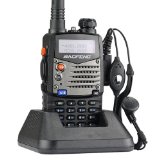 In the Winter 2013 issue of CQ VHF magazine, I wrote about some of the VHF/UHF handheld radios available from China. In that article, I reported on the measured performance of a few of the Wouxun and Baofeng transceivers. One of the Baofeng UV-5R radios that I tested showed harmonic distortion that was a bit high on the 2 Meter band, around -40 dBc.
In the Winter 2013 issue of CQ VHF magazine, I wrote about some of the VHF/UHF handheld radios available from China. In that article, I reported on the measured performance of a few of the Wouxun and Baofeng transceivers. One of the Baofeng UV-5R radios that I tested showed harmonic distortion that was a bit high on the 2 Meter band, around -40 dBc.
I recently got my hands on a Baofeng UV-5RA, which is a newer version of the same radio (firmware BFB297), so I wanted to check its performance. Like the two UV-5R models I checked, the power output, transmit frequency and receiver sensitivity were all quite solid on both bands. I was more interested in the harmonic distortion present in the transmit signal.
On the 2 Meter band, the 2nd harmonic measured -48.4 dB relative to the fundamental which is pretty good. Similar to the other radios I measured, the performance in the 70 cm band is a lot better (-56.1 dB).
This radio has significantly better harmonic distortion than the older UV-5R radio. Of course, this is just a single sample, so performance of other radios may be different.
73, Bob K0NR
 HF Slacker Works the CQ WPX Contest
HF Slacker Works the CQ WPX Contest
 This past weekend, I had to great time working the CQ WPX (SSB) Contest. I am pretty much an HF Slacker but I do like getting on the air once in a while for these contests. The attraction seems to be the opportunity to make lots of contacts in a short time and picking up a few new countries. The format for this contest is really fun…multipliers are based on the callsign prefix, so “everyone is DX”…sort of. CQ has an awards program (CQ WPX Award) that is also based on prefixes worked, so the contest is a good way to pursue that award. The ARRL recently added CQ WPX Award support to Logbook of the World, which will help with confirming contacts. Us HF Slackers don’t like messing around with actually sending QSL cards when transferring a few bytes electronically is sufficient.
This past weekend, I had to great time working the CQ WPX (SSB) Contest. I am pretty much an HF Slacker but I do like getting on the air once in a while for these contests. The attraction seems to be the opportunity to make lots of contacts in a short time and picking up a few new countries. The format for this contest is really fun…multipliers are based on the callsign prefix, so “everyone is DX”…sort of. CQ has an awards program (CQ WPX Award) that is also based on prefixes worked, so the contest is a good way to pursue that award. The ARRL recently added CQ WPX Award support to Logbook of the World, which will help with confirming contacts. Us HF Slackers don’t like messing around with actually sending QSL cards when transferring a few bytes electronically is sufficient.
I operated from our mountain cabin, with just 100W to a trap dipole up in the trees. Not a Big Gun station, especially not in this contest. There were quite a few stations on the Caribbean, many of them contest DXpeditions. Conditions were pretty good on 20M and 15M, with 10M also quite usable during portions of the day.
Band QSOs Pts WPX 7 39 69 30 14 71 142 59 21 81 163 54 28 9 24 6 Total 200 398 149 Score : 59,302
The last time I submitted a log for CQ WPX was in 2011 with roughly the same station. That year, I made 98 QSOs for a score of 18,920. So this year’s score is an improvement over that effort.
But the most important thing is to have fun messing around with radios.
73, Bob K0NR
